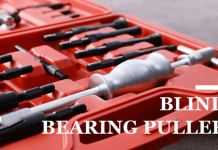Finding the perfect dress online does not have to mean scrolling through thousands of options for hours. With the right approach, anyone can quickly narrow choices to styles, colors, and fits that truly work. The key is to use clear search methods, visual tools, and smart filters to match personal style and budget without wasting time.
Today’s online stores offer more than just product listings. Many now include image search features, detailed size guides, and style recommendations that make the process faster and easier. By combining these tools with a clear idea of what works for one’s body shape and occasion, it becomes possible to skip the frustration and go straight to the best options.
This article will share practical strategies to help someone shop smarter, choose dresses that flatter, and make confident decisions without endless searching. Each tip builds toward a process that saves time while still delivering a dress worth wearing.
Key Strategies to Find the Perfect Dress Online
A smart approach to online dress shopping starts with knowing the exact style, fit, and quality that will work best. Accurate measurements, trusted seller choices, and feedback from other buyers help narrow the search and reduce returns.
Define Your Style and Occasion
A clear idea of style saves time and avoids impulse buys. The dress should match the event’s formality, such as casual daywear, cocktail attire, or a floor-length gown for a formal evening.
Consider the setting, season, and color palette that complements the wearer’s skin tone. For weddings, some may prefer to buy JJ’s House collection of stunning wedding dresses for a tailored and elegant look.
For family events, stylish dresses for mothers often suit semi-formal or formal gatherings and provide comfort without losing sophistication. Matching accessories, such as shoes and jewelry, should also align with the chosen style for a cohesive appearance.
Know Your Measurements and Use Size Charts
Accurate measurements prevent sizing mistakes. A soft measuring tape works best for bust, waist, hips, and length. Compare these numbers to the size chart provided by the seller, as sizing often varies between brands.
It helps to measure while wearing undergarments similar to those planned for the event. If between sizes, choose based on the style—fitted dresses may need a closer fit, while looser styles allow more flexibility.
Some retailers offer fit guides with garment measurements, which can be more precise than standard size charts. This extra step reduces the need for alterations after delivery.
Leverage Customer Reviews for Fit and Quality
Reviews often reveal how a dress fits real people, not just models. Look for comments on fabric texture, stretch, and how the garment behaves after washing.
Pay attention to feedback from buyers with similar body shapes and sizes. Many include photos that show the true color and drape of the fabric under normal lighting.
Consistent notes about sizing up or down can guide the final choice. Negative reviews that mention poor stitching or thin fabric can help avoid disappointment.
Select Trusted Online Retailers
Buying from sellers with clear return policies and transparent product descriptions reduces risk. Detailed photos from multiple angles, fabric composition, and care instructions show a commitment to quality.
Retailers with a range of formal, semi-formal, and casual designs allow shoppers to compare options in one place. For example, those seeking stylish dresses for mothers may find a variety of cuts and lengths from trusted sources.
Secure payment methods and responsive customer service also indicate a dependable shopping experience. A well-established store often has consistent sizing and quality across its collections.
Choosing the Best Dress for Your Body and Budget
The right dress should match the wearer’s shape, personal style, and spending limit. Fit, fabric, and price all work together to create a choice that looks good and feels comfortable without straining the budget.
Identify Flattering Styles for Your Body Type
Body shape plays a major role in how a dress looks once worn. For example, an A-line cut can balance wider hips, while a sheath dress works well for straight figures. Petite frames often benefit from shorter hemlines or vertical patterns to create height.
Those with fuller busts may prefer V-necklines to draw attention upward without adding bulk. Meanwhile, a defined waistline can create a more structured appearance for many shapes.
Special events like weddings require more specific choices. Bridesmaids can explore bridesmaid dress ideas and options that suit different body types while keeping a consistent look for the group. Matching color palettes with varied silhouettes is one way to achieve this.
Explore Dress Collections from Top Brands
Browsing curated collections helps narrow choices faster. Many brands sort dresses by occasion, length, and cut, which saves time. For example, cocktail dresses, work dresses, and formal gowns often appear in separate categories.
Seasonal releases also bring fresh fabrics and patterns. Lightweight cotton or linen suits summer, while velvet and satin work better for cooler months. Paying attention to these details can help avoid discomfort later.
Some collections highlight trending colors or feature dresses with adjustable straps, removable belts, or stretch panels. These small features can improve fit without costly tailoring. In addition, shopping during seasonal sales can give access to higher-quality dresses at lower prices.
Compare Prices and Return Policies
Price comparison matters as much as style. Two similar dresses can differ greatly in cost depending on brand, fabric, and construction. Shoppers should look at the material blend, stitching quality, and lining before deciding if a higher price is justified.
Return policies are equally important for online purchases. A flexible return window allows trying the dress at home and sending it back if the fit or color is off. Free returns or low-cost exchanges reduce the risk of buying the wrong size.
Some stores offer price-matching, which can help secure the best deal without switching retailers. Keeping these factors in mind can save both money and frustration.
Conclusion
Finding the right dress online works best with a clear plan. They should know their measurements, set a budget, and use filters to narrow choices. This avoids wasting time on options that do not fit their needs.
Visual search tools can speed up the process. By uploading a photo, they can locate similar styles without guessing keywords. This approach helps match specific colors, patterns, or shapes more accurately.
Reading product details and reviews adds confidence before purchase. Shoppers can compare fabrics, sizes, and return policies to avoid surprises. As a result, they make choices that fit both style and comfort.









































